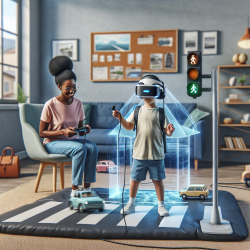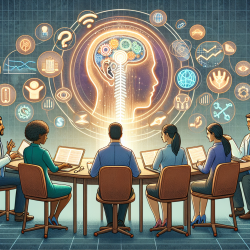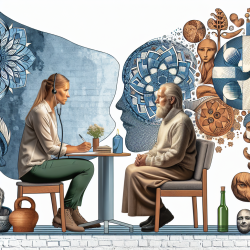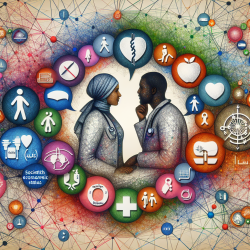Introduction
As practitioners dedicated to improving the lives of children with Autism Spectrum Disorder (ASD), it is crucial to explore innovative methods that ensure their safety and enhance their learning experiences. Recent research highlights the potential of immersive virtual reality (VR) as a tool for teaching pedestrian safety skills to children with ASD. This blog post delves into the findings of the study titled Evaluation of an Immersive Virtual Reality Safety Training Used to Teach Pedestrian Skills to Children With Autism Spectrum Disorder, offering insights on how practitioners can leverage VR technology to create safer learning environments.
The Need for Safety Skills Training
Children with ASD are at a heightened risk of injury due to deficits in social communication and interaction, as well as repetitive behaviors (American Psychiatric Association, 2013). Therefore, incorporating safety skills training into their treatment programs is essential. Traditional methods often struggle to generalize skills from controlled settings to real-world environments, which is where VR can bridge the gap.
Why Virtual Reality?
VR environments provide a unique combination of controlled and realistic settings, allowing children to practice safety skills without the inherent dangers of real-world scenarios. The study in question evaluated the effectiveness of an immersive VR environment in teaching three children with ASD to determine when it is safe to cross the street. The results were promising, with all participants achieving mastery in both VR and natural settings after modifications to the training environment.
Key Findings
- VR training can effectively teach children with ASD to identify safe street-crossing opportunities.
- The immersive nature of VR, particularly with head-mounted displays, enhances the realism of the training environment.
- Generalization to natural environments was achieved, highlighting VR's potential to replace or supplement traditional training methods.
Implementing VR in Practice
For practitioners, integrating VR into safety skills training can be a game-changer. Here are some steps to consider:
- Desensitization: Gradually introduce children to VR headsets to ensure comfort and engagement.
- Realistic Scenarios: Use VR to simulate real-world environments, allowing children to practice skills in a safe, controlled setting.
- Focus on Generalization: Ensure that skills learned in VR translate to real-world settings by gradually increasing the complexity and realism of VR scenarios.
Encouraging Further Research
While this study provides a solid foundation, further research is needed to explore VR's full potential in safety skills training. Practitioners are encouraged to collaborate with researchers to refine VR applications and develop new training modules for various safety skills.
Conclusion
Immersive VR offers a promising avenue for teaching safety skills to children with ASD, combining the benefits of controlled environments with the realism needed for effective learning. By incorporating VR into their practice, practitioners can enhance the safety and independence of children with ASD, ultimately improving their quality of life.
To read the original research paper, please follow this link: Evaluation of an Immersive Virtual Reality Safety Training Used to Teach Pedestrian Skills to Children With Autism Spectrum Disorder.










